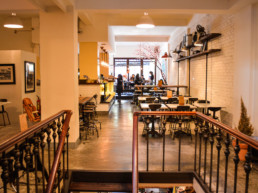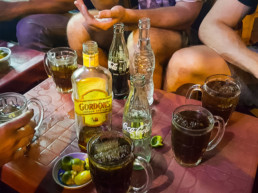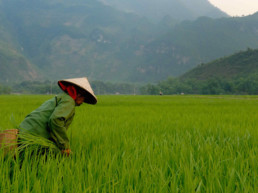The limestone crags of Halong Bay shrouded in spectacular fog. The French colonial architecture of Hanoi. The chaotic ballet of motorcycles on the streets of Saigon. There are certain indelible images of Vietnam that capture the hearts and minds of the travelers who experience them.
I’ve been lucky enough to call Saigon home for the past few months, and but for the odd rat, I’ve come to love the sights, sounds and yes, even many of the smells the city has to offer. What makes Saigon so special is that life is literally lived in its full glory on the streets – breakfast, lunch and dinner served street-side on plastic chairs, action packed food markets, Tai Chi or badminton in the parks, and fully functioning barber shops on every street corner. To truly experience this city of nearly eight million people, an inquisitive traveler only needs to walk the streets.
Photographer Corinne Taylor recently took to the streets to capture daily life in Saigon.
Traffic
It’s the one constant in Saigon. If you’re willing to brave the ocean of swerving motorbikes, pedal bikes and a growing number of luxury vehicles, several places are willing to rent them to you. If you’re not quite ready to get behind the wheel yourself, rest assured Grab and Uber are both widely available.
You can hop on the back of a well maintained motorbike with a proper helmet and cross several of the city’s districts for under 30-60k VND ($1.50 – 2.75 USD). A quick tip on traveling after dark – unfortunately drunk driving is not uncommon across Vietnam, so at night it’s advisable to be extra careful grabbing rides. Mai Linh (green) or VinaSun (white) are the two largest reputable cab companies, which may be the safer bet.
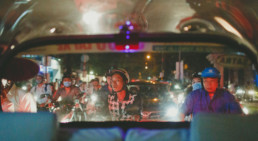
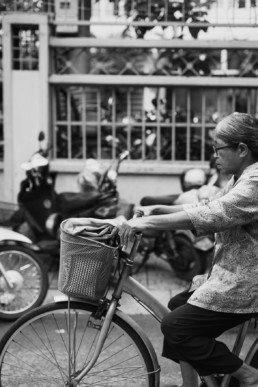
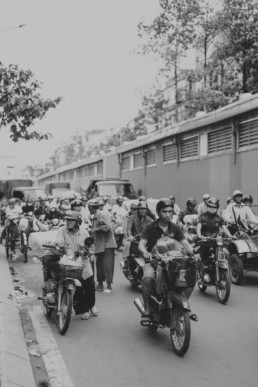
Markets
Ben Thanh Market, centrally located in District 1, caters to tourists with a myriad of trinkets from the usual to the very unusual. Though prices are marked up considerably relative to other places in the city, it’s still a pretty impressive sight to behold if you’re nearby. Tan Dinh Market in the northern part of D1 is well known for its almost claustrophobia inducing mountains of fabrics and nearby tailors, but arrive early enough in the morning and you’ll bear witness to an incredible food and fish market along the perimeter. In what I had previously considered a primarily male job, the vendors running the butcher stalls of this market are nearly exclusively women yielding sizeable machetes.
If you’re more of a bulk buyer, it’s worth visiting Binh Tay Market in Chinatown (District 5). This is truly a wholesale operation and tourists are few and far between. Adventurous travelers who do take the time to visit aren’t continually accosted like in the more central markets, which I see as a huge perk. You actually go relatively unacknowledged unless you’re looking to buy dozens, or rather thousands of items ranging from plastic food containers, to nail polish or shoes.
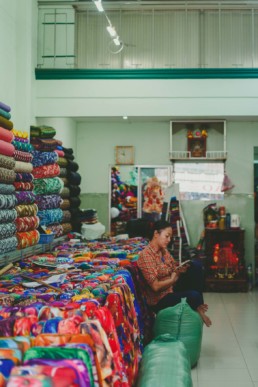
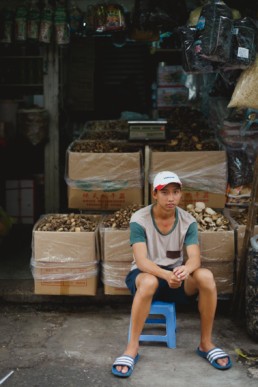
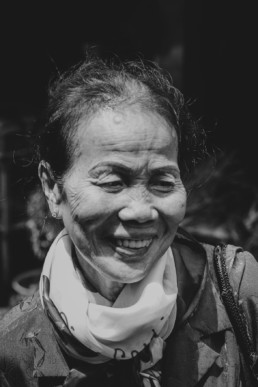
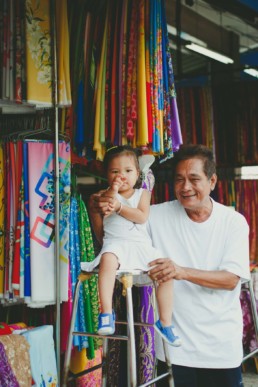

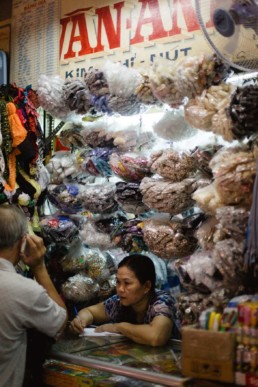
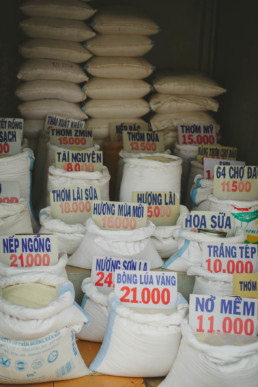
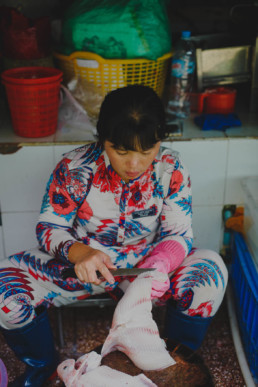
Chinatown
Not surprisingly given its overall size, Saigon has the largest Chinese community in Vietnam, which is called Cholon. Touring Cha Tam Church – the Chinese Catholic Church – or Quan Cong Temple – the largest assembly hall of the Chaozhou Chinese Congregation in Saigon – you get an appreciation for the history of this community.
Saigon Free Walking Tours runs an excellent four-hour Chinatown tour, guided by local university students majoring in English or Tourism. Be sure to book early, particularly during peak tourist season of December to February. These private tours are quite literally free, although you do have to pay a nominal scooter surcharge and any items and food purchased along the way, which should definitely include a bowl of delicious Chinese Sweet Soup.
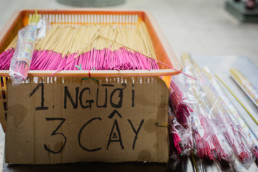
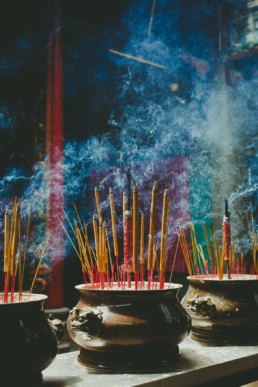
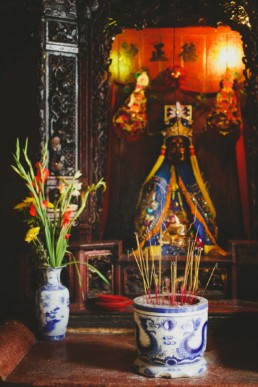
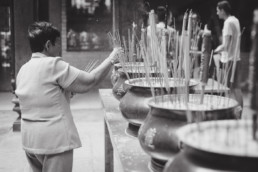
Food
Eating excellent pho (which for the record is pronounced PHA, no hard O) or trying your hand at slightly more provocative dishes in Saigon can be done incredibly cheaply if you know where to look. Phở Hòa Pasteur consistently ranks among the top five restaurants in the city across several travel authorities. A literal bounty of fresh herbs awaits you and the ordering process itself is made relatively easy thanks to a photo based menu posted to the wall with English descriptors on it.
Another great way to spend an evening is the XO or Vespa Adventures food tour through the city. For approximately $75 per person you’ll be driven outside of the regular tourist haunts on the back of a motorbike, making a several stops over four to five hours where you’ll dine with locals. Prepare yourself for BBQ goat, beef, frog and prawns and even duck embryos if you’re up for it. Other delicacies on offer include Banh Khot (mini rice pancakes), grilled scallops or mussels, quail eggs, coconut jelly and of course a Vietnamese Coffee to cap off the tour. Food and local beer is unlimited during both tours.
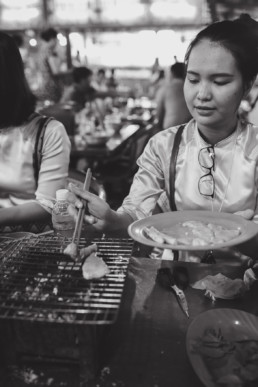
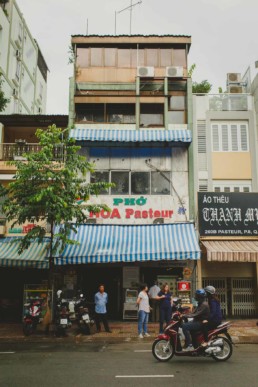
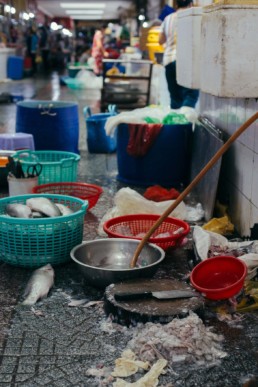
River
The Saigon River carves Saigon into its various districts. To some, it’s a brown cesspool while others see beauty and admire the history of this important trade route – it’s all in the eye of the beholder, I suppose. Along the river, literally within just a few hundred feet of each other, are startling scenes of contrast; incredible construction boom highlighting economic development across from incredible poverty and dilapidated homes.
Going about their business on small boats or fishing along the river in hopes of a catch for dinner, many locals don’t seem to give much attention to the frenzy of nearby construction taking place in D1 and D2. Some of the best views of the river can be caught while crossing the city’s numerous bridges or by taking a half-day river cruise.
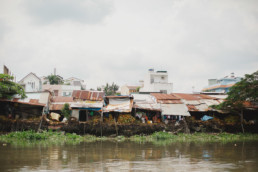
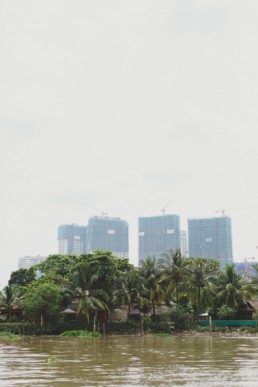
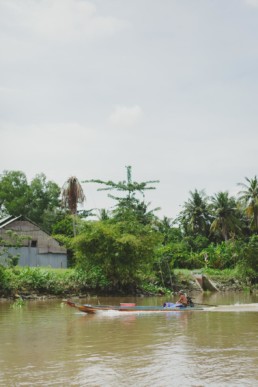
River
A guide shows the amazingly tight conditions at the Chu Chi Tunnels, an insightful half day trip just outside of the city that certainly gives you an appreciation for the living conditions of some citizens during the Vietnam War. Tours usually entail a boat ride down the Mekong, lunch, and tour of the tunnels, which are not for the faint of heart or claustrophobic.
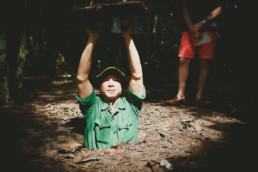
All photos for the Saigon Photo Guide courtesy of Corinne Taylor. Corinne is a Canadian travel and lifestyle photographer originally from just outside of Toronto Canada, and currently based in Seoul, South Korea. She uses a documentary style approach to capture the raw feeling and true nature in the subjects and locations she shoots. In addition to the great pictures below, Corinne’s work can be found at www.corinnetaylor.com and on Instagram @corinnetphoto.
Make your next trip the best one.
Departful is a full service travel agency creating truly exceptional travel experiences that are 100% personalized to you. Wherever you’re going, whatever your interests, we help you plan the perfect trip.
Madeline Burch
Madeline was born and raised in Toronto Canada, educated in marketing, and has worked in brand management and the alcohol industry for nearly a decade. In search of great drinks, stories and photos, she has travelled to South East Asia multiple times including a recent eight month stint based in Vietnam. From luxe travel to volunteer missions, she’s interested in it all.


